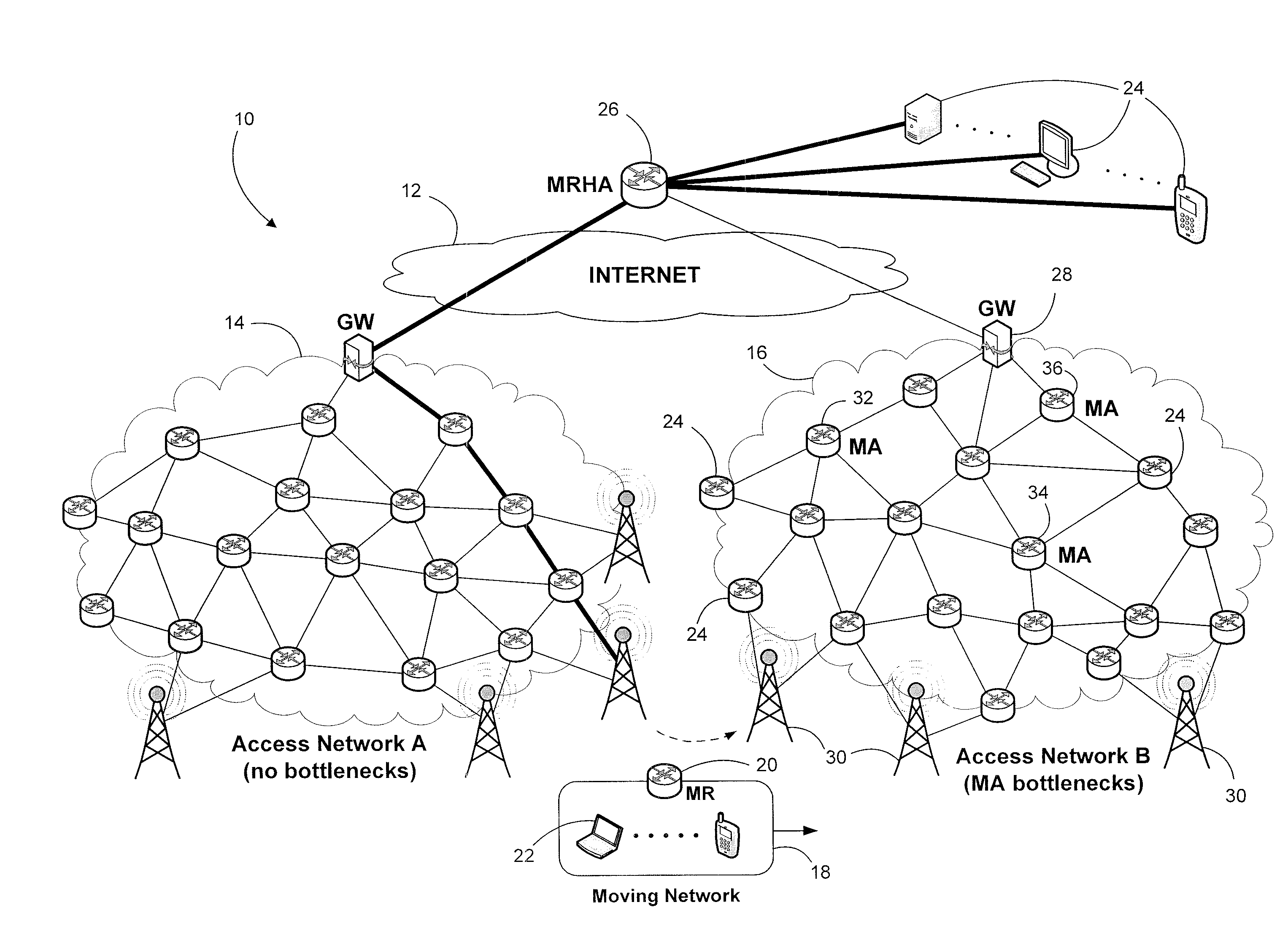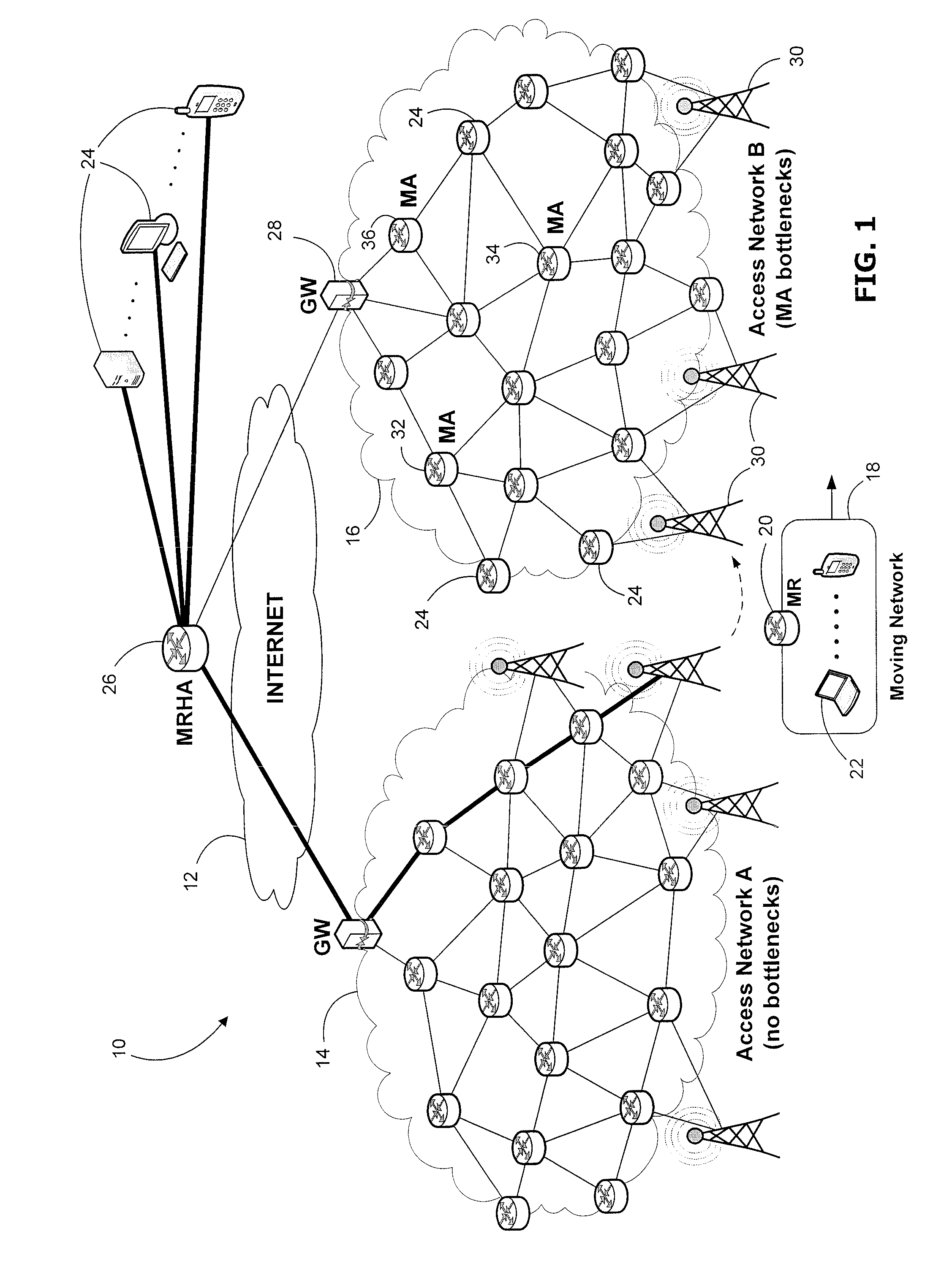Network Mobility
- Summary
- Abstract
- Description
- Claims
- Application Information
AI Technical Summary
Benefits of technology
Problems solved by technology
Method used
Image
Examples
second embodiment
[0071]When the MR 20 enters the wireless coverage area of a new access network, and a handover is deemed necessary to the new network, the MR 20 must transfer all ongoing sessions from the serving access network 14 to the target access network 16, as shown in FIG. 1. In this embodiment, the handover is network-controlled and the target EN 34 performs most of the signalling. However, an alternative possibility is for the handover to be controlled by the MR 20 and this is described in greater detail below in the Furthermore, it is assumed that the moving network 18 is moving from the access network 14 in FIG. 1, which does not operate any tunneling-type micro-mobility protocol, to the access network 16, which does.
[0072]Referring to FIG. 3, once the MR 20 has auto-configured the RCoA and LCoA as described above, it composes a combined mobility and QoS request. The purposes of this message is to enable the access network 16 to perform mobility (e.g. register bindings) and QoS (e.g. ta...
first embodiment
[0101]An example of the MR-controlled method is shown in FIG. 5. At step S5-1 the MR 20 sends a QoS request in the form of a QBU message to the target EN 34. Upon receiving the QBU message, the target EN 34 checks its available resources and looks up one or more alternative EN that might also be able to provide resources. At step S5-2 the target EN responds with a QBU acknowledgement message; this is similar to that described above, except that a flag is set to indicate to the MR 20 that no resources have been reserved yet. The QBU acknowledgement indicates the resources the target EN 34 can accommodate, as well as information about alternative EN(s) that might be able to meet its remaining resource requirements. The MR 20 triggers resource reservation by sending an RSVP Path message to the target EN 34, establishing a route for upstream traffic from the MR 20. Upon receipt the target EN 34 then sends an RSVP Resv message to the MR 20 (reserving resources in the upstream direction a...
PUM
 Login to View More
Login to View More Abstract
Description
Claims
Application Information
 Login to View More
Login to View More - Generate Ideas
- Intellectual Property
- Life Sciences
- Materials
- Tech Scout
- Unparalleled Data Quality
- Higher Quality Content
- 60% Fewer Hallucinations
Browse by: Latest US Patents, China's latest patents, Technical Efficacy Thesaurus, Application Domain, Technology Topic, Popular Technical Reports.
© 2025 PatSnap. All rights reserved.Legal|Privacy policy|Modern Slavery Act Transparency Statement|Sitemap|About US| Contact US: help@patsnap.com



